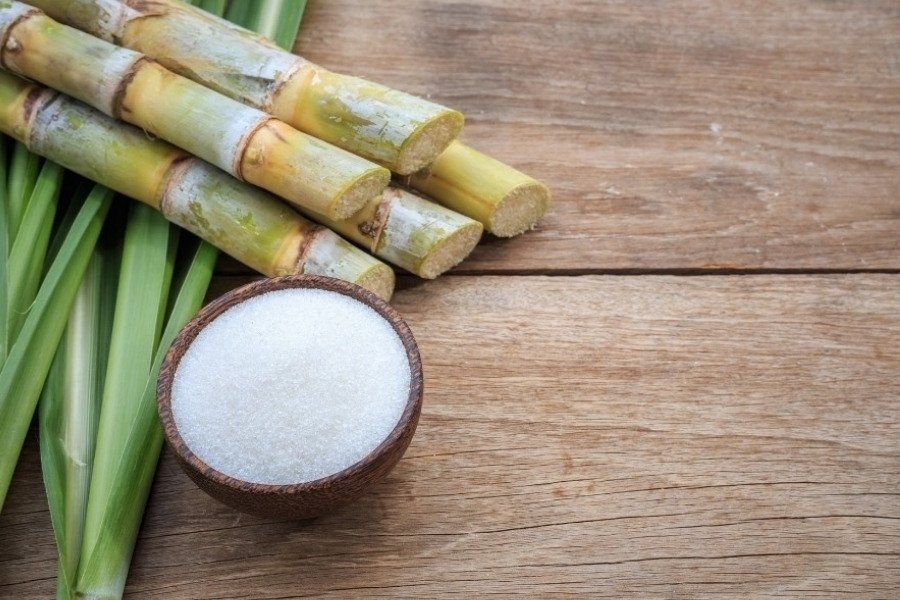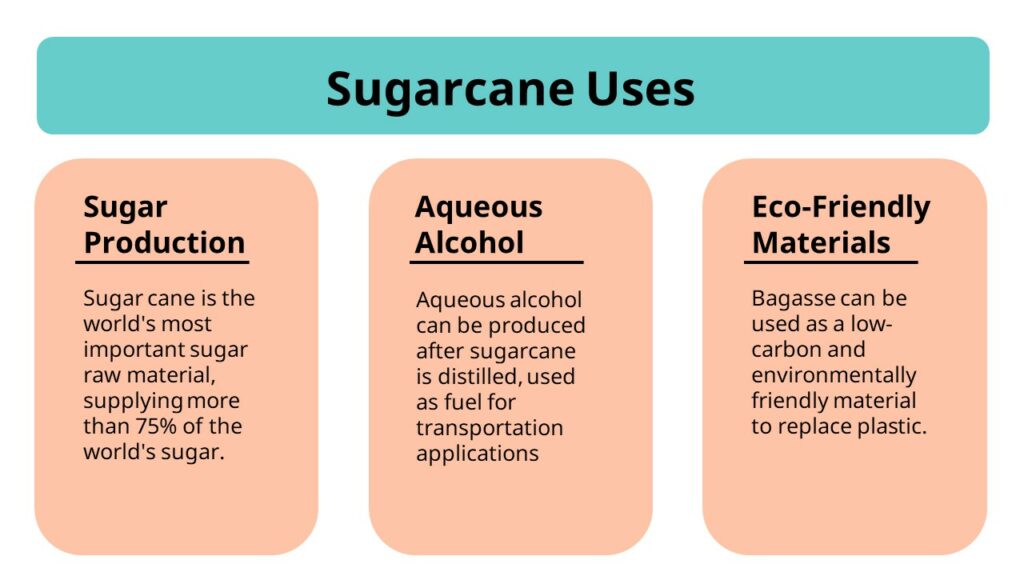10 Surprising Ways to Answer What Are Sugar Canes Used For
Recognizing Exactly How Sugar Canes Job: What Are Sugar Canes Utilized For in Food and Beyond?
Sugar walking canes are important to various aspects of both cooking and industrial methods. Their versatility permits them to be changed into sugar, beverages, and even biofuels. As one explores the journey from farming to processing, the varied applications of sugar canes expose a complex interaction in between agriculture and market. The effects of sugar cane production expand past plain energy, raising concerns concerning ecological sustainability and economic effect.

The History and Beginning of Sugar Canes
Usually taken for granted in modern-day diet plans, the background and origin of sugar walking canes disclose a complex journey that spans thousands of years. Native to Southeast Asia, sugar walking stick was first grown around 8000 BCE, with its sweet juice coming to be highly valued by very early worlds. By the very first millennium AD, it infected India, where it was fine-tuned into crystallized sugar, a significant technology that changed its usage and profession. The intro of sugar walking cane to the Mediterranean occurred around the 7th century, many thanks to Arab investors, who recognized its economic potential.During the Age of Exploration, European homesteaders established sugar vineyards in the Caribbean, substantially influencing international profession. By the 17th century, sugar came to be a standard asset, sustaining economies and influencing social frameworks. The tale of sugar walking sticks is intertwined with agriculture, business, and social exchanges, noting its relevance fit modern culinary techniques and financial systems.

Growing and Gathering Practices
The growing and harvesting of sugar canes entail numerous critical methods that establish the top quality and return of the crop - What Are Sugar Canes Used For. Key components include efficient soil preparation strategies, exact planting approaches, and efficient harvesting methods. Recognizing these practices is crucial for optimizing production and making certain sustainability in sugar cane farming
Soil Prep Work Techniques
Reliable dirt prep work techniques are crucial for successful sugar walking cane cultivation, as they lay the foundation for healthy and balanced development and perfect yield. The procedure begins with dirt testing to examine nutrient levels and pH equilibrium, permitting customized changes. Tilling and raking are then utilized to break and freshen the dirt up compaction, improving origin infiltration. Integrating organic issue, such as garden compost or well-rotted manure, enhances soil fertility and framework. In addition, appropriate drainage systems are essential to avoid waterlogging, which can prevent cane advancement. Cover cropping may also be made use of to reduce weeds and boost soil health and wellness. These methods collectively guarantee that sugar walking cane has the very best environment to thrive, resulting in durable plant wellness and increased productivity.
Planting and Development
Successful planting and development methods are essential for making the most of the yield of sugar walking stick. The process begins with picking healthy seed canes, which are sections of fully grown stalks rich in buds. These seed walking sticks are typically planted in well-prepared soil, ideally at a depth of 4 to 6 inches, ensuring adequate moisture and aeration. Sugar cane thrives in warm climates with sufficient sunlight and requires consistent irrigation, especially throughout droughts. Fertilization with potassium, phosphorus, and nitrogen is critical to promote durable development. Weed control is likewise essential, as competition can hinder growth. Regular tracking of plant health and dirt problems enables timely treatments, ultimately resulting in a successful plant that satisfies market demands.
Collecting Methods
Collecting sugar cane requires mindful planning and execution to guarantee optimal return and high quality. Usually, the harvest occurs when the walking cane gets to excellent sugar material, typically in between 12 to 18 months after growing. There are two main methods: handbook and mechanical harvesting. Hands-on harvesting involves workers using machetes to reduce the stalks at ground level, making sure minimal damages to the plant and soil. On the other hand, mechanical harvesting utilizes specific machines that reduced, cut, and transport the walking stick, boosting effectiveness and minimizing labor expenses. However, mechanical methods can lead to greater dirt compaction and loss of nutrients. Despite the technique, timely harvesting is important, as delays can cause decreased sugar quality and boosted susceptibility to diseases and insects.
Handling Methods for Sugar Removal
The processing of sugar walking stick is a crucial stage in sugar production, including a number of essential methods - What Are Sugar Canes Used For. Initially, harvested walking cane goes through squashing and juicing to remove its wonderful liquid. This juice after that proceeds through filtration and condensation, transforming it right into the sugar most generally used today
Harvesting Sugar Walking Cane
Sugar walking stick harvesting marks an important phase in the production procedure, where timing and strategy play vital roles in maximizing return. Usually, the harvest occurs when sugar material is at its height, which varies based upon climate and development problems. Employees make use of specific tools or manual devices to reduce the walking stick at the base, guaranteeing minimal damage to the plant. Proper method is crucial; cutting expensive can decrease the quality and amount of the sugar extracted later on. After cutting, the walking stick should be carried quickly to processing facilities to stop spoilage and sugar destruction. The effectiveness of the harvesting process significantly affects the total efficiency and productivity of sugar cane farming, making it an essential emphasis for manufacturers.
Crushing and Juicing
When sugar walking stick is harvested, the following necessary action involves crushing and juicing to remove the wonderful liquid that contains sucrose. This that site procedure usually employs heavy equipment designed to squash the stalks, damaging down the coarse framework and releasing the juice. Rollers or mills use considerable pressure, enabling the cane juice to drain while dividing the fibrous residue, referred to as bagasse. Once smashed, the cane is commonly subjected to a series of pressing phases to make best use of juice extraction. The collected juice is rich in sugar and may contain contaminations, which will be resolved in later processing actions. Generally, juicing and crushing are essential methods that change harvested sugar walking stick into a liquid type ideal for further refinement.
Purification and Formation
Filtration and formation are crucial processes in changing raw cane juice into refined sugar. After drawing out juice from crushed sugar canes, the liquid includes pollutants such as plant minerals, proteins, and fibers. To accomplish filtration, the juice goes through information, where heat and lime are added to precipitate pollutants, which are then eliminated. The cleared up juice is then concentrated through evaporation to form a thick syrup.Next, condensation happens, where sugar crystals develop as the syrup cools down. This procedure usually includes seeding the syrup with existing sugar crystals to promote uniform growth. The resulting crystals are separated from the staying molasses with centrifugation, producing pure sugar. This refined product is after that dried and packaged for various culinary usages.
Culinary Utilizes of Sugar Canes
While commonly connected largely with sweeteners, sugar walking sticks supply a functional variety of cooking applications beyond their role in sugar manufacturing. Fresh sugar walking stick can be juiced, generating a sweet, invigorating drink enjoyed in several exotic regions. This juice offers as a base for cocktails and smoothies, adding a distinct taste profile.Additionally, sugar walking stick syrup, originated from simplifying the juice, is utilized as a natural sugar in numerous dishes, from marinates to desserts. The syrup presents an abundant, caramel-like flavor, boosting both tasty and pleasant recipes.In some foods, sugar cane stalks are smoked or roasted, offering a distinctive great smoky taste that matches meats and vegetables. Additionally, sugar walking cane can be included right into treats, such as sweets and desserts, where its sweet taste and coarse texture develop delightful contrasts. Generally, sugar canes contribute to both traditional and ingenious culinary productions throughout diverse cultures.
Industrial Applications Past Food
Beyond their culinary uses, sugar walking sticks play a substantial function in numerous industrial applications, adding to sectors such as bioenergy, paper manufacturing, and bioplastics. The fibrous material of sugar cane is used in the manufacturing of biofuels, especially ethanol, which offers as a renewable resource resource that decreases dependence on nonrenewable fuel sources. In the paper industry, bagasse, the fibrous residue left after juice removal, is refined right into pulp for paper and cardboard production, advertising sustainable methods by utilizing waste. In addition, improvements in bioplastic innovation have caused the growth of naturally degradable plastics originated from sugar cane, supplying an environment-friendly choice to conventional petroleum-based plastics. These industrial applications not only boost the value of sugar canes yet likewise align with international movements towards sustainability and sustainable sources, illustrating their convenience beyond the kitchen.

The Ecological Influence of Sugar Walking Cane Production
The production of sugar walking cane, in spite of its various industrial advantages, presents considerable ecological obstacles. Logging is typically a consequence, as vast locations of land are removed to grow sugar cane, resulting great site in environment loss and biodiversity decline. In addition, the extensive farming techniques related to sugar walking stick growing can lead to dirt deterioration and disintegration. The heavy use pesticides and fertilizers to optimize yields adds to water contamination, detrimentally impacting marine ecosystems.Moreover, sugar cane manufacturing is connected to increased greenhouse gas exhausts, particularly with land-use adjustments and the burning of walking stick areas prior to harvest. These practices not just impact air top quality but likewise add noticeably to climate change. Furthermore, the water-intensive nature of sugar walking cane farming places anxiety on neighborhood water resources, affecting neighborhoods and ecosystems reliant on these supplies. Dealing with these environmental effects is essential for lasting sugar cane production in the future.
Often Asked Inquiries
Exist Health Advantages Linked With Consuming Sugar Walking Cane?
The inquiry of wellness advantages connected to sugar cane consumption highlights potential advantages. Sugar walking cane may give hydration, crucial minerals, and anti-oxidants, but moderation is important due to its all-natural sugar web content and possible health and wellness ramifications.
Exactly How Does Sugar Walking Cane Contrast to Various Other Sweeteners Nutritionally?

Sugar walking cane provides all-natural sweetness, largely making up sucrose, while various other sweeteners differ in composition and calorie content. Compared to fabricated options, sugar walking cane offers vitamins and minerals, though it stays high see in calories and carbs.
Can Sugar Walking Cane Be Expanded in Non-Tropical Regions?
Sugar walking cane mostly flourishes in exotic climates, needing cozy temperatures and abundant rains. While some non-tropical regions try cultivation, success is restricted because of poor warmth and expanding seasons, making large manufacturing testing.
What Are the Common Bugs or Illness Influencing Sugar Canes?
Typical pests impacting sugar canes consist of the sugarcane borer and aphids, while conditions like leaf scald and red rot present substantial risks. Reliable management approaches are crucial for maintaining healthy and balanced sugar walking stick plants and maximizing returns.
Just How Does Sugar Cane Effect Citizen Economies?
The impact of sugar cane on local economic climates is considerable, supplying employment possibility, enhancing agricultural sectors, and contributing to exports. Its growing boosts and sustains regional businesses community growth through enhanced revenue and infrastructure improvements. Indigenous to Southeast Asia, sugar walking cane was very first cultivated around 8000 BCE, with its sweet juice coming to be very valued by early people. The intro of sugar cane to the Mediterranean happened around the 7th century, many thanks to Arab investors, that recognized its financial potential.During the Age of Exploration, European colonists established sugar vineyards in the Caribbean, considerably affecting worldwide trade. The processing of sugar walking cane is a crucial stage in sugar manufacturing, including several key methods. While usually linked largely with sugar, sugar walking sticks offer a functional variety of culinary applications past their duty in sugar production. The heavy use of plant foods and pesticides to take full advantage of yields adds to water pollution, adversely impacting water ecosystems.Moreover, sugar cane manufacturing is connected to enhanced greenhouse gas emissions, specifically with land-use changes and the burning of walking cane fields prior to harvest.